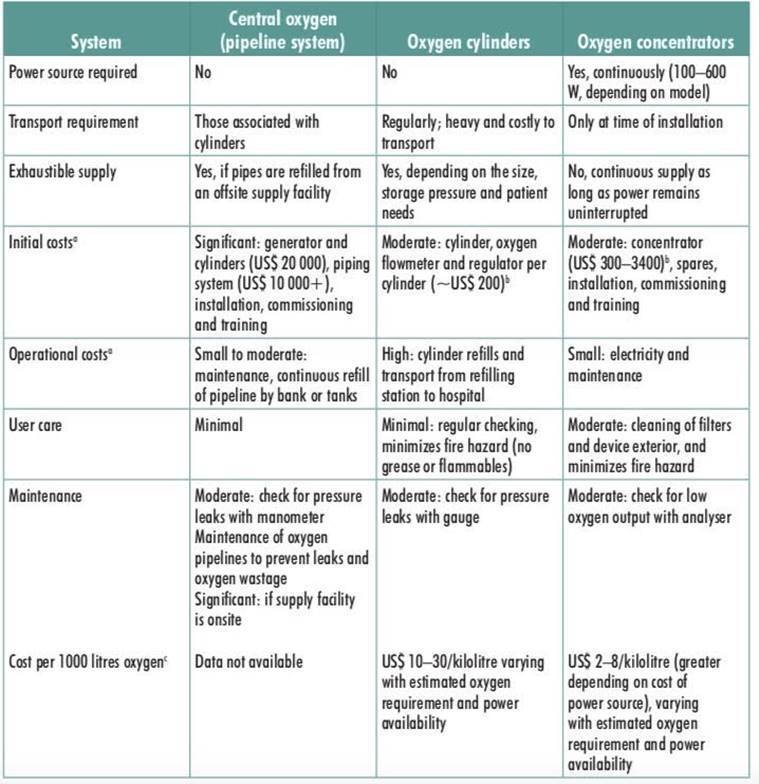Oxygen Concentrator : how to pick right one
Oxygen Concentrator have become a necessity to acute shortage of oxygen in the country.
What are Oxygen Concentrators?
Concentrators are small device supplying supplementary oxygen-enriched air to people requiring oxygen therapy. They are generally used for patients with lung and other respiratory diseases.
Oxygen concentrators are suitable for whom?
Only mild to moderately ill patients, who have an oxygen saturation level between 90-94, should depend on an oxygen concentrator and can use it at home. Because there is scarcity of oxygen, even those with oxygen level as low as 85 can opt for one. Anyone with oxygen saturation depleting below 80-85 may need higher flow of oxygen and will have to switch to a cylinder or liquid medical oxygen supply.
“Say if a person’s oxygen saturation is 87 to 90 and he put on a oxygen concentrator. If the oxygen saturation rises and maintains between 92-94 that means the concentrator is able to help. But if patient’s oxygen saturation continues to deplete, that means he will need to switch to a cylinder with higher oxygen flow,” physician Dr Shahid Barmare says.
An inflamed lung infected by Covid-19 is unable to use atmospheric air (that has 21 per cent oxygen) to draw enough oxygen. External oxygen support makes the job easier for lungs.
Also, steady electricity supply is a must. If you live in a place with frequent power cuts, you may want to look for an oxygen cylinder.
When should one use Oxygen Concentrator?
“In the case of Covid-19 patients, who feel breathless when their oxygen saturation drops below 94 per cent. Then he or she must be put on Oxygen Therapy immediately to avoid damage to other body parts. Oxygen concentrators play an important role as they supply supplemental oxygen to patients via nasal cannula,”. Sunil Khurana, MD and CEO at BPL Medical Technologies in New Delhi, told IANS.
“Oxygen concentrators work like the air conditioning machine because It takes the oxygen from the air, modifies it and releases it in a different form. Oxygen concentrators concentrate the ambient oxygen,” added Dr Ravi Shekhar Jha, HOD and Senior Consultant Pulmonology, Fortis Escorts Hospital, Faridabad.
How do Oxygen concentrator machines work?
An oxygen concentrator is an electronically operated device that separates oxygen from room air. It provides high concentration of oxygen directly to you through a nasal cannula.
“Clinical studies have documented that oxygen concentrators are therapeutically equivalent to other types of oxygen delivery systems,” .
“They work on the principle of ‘rapid pressure swing absorption’. Which is where the it removes nitrogen from the air using zeolite minerals which absorb the nitrogen, leaving the other gases to pass through and leaving oxygen as the primary gas. Once the it collect oxygen, the pressure then drops which allows nitrogen to desorb and expelled back into the air through silencers,”.
Oxygen concentrators are portable and easy to use and are thus better than oxygen cylinders. Although at Rs 40,000-Rs 90,000, they are more expensive than cylinders (Rs 8,000-20,000) because they require very minimal maintenance.
The only maintenance cost is power consumption, disposable filters and sieve beds that need replacement over the year.
“Oxygen concentrators do not have limitations of refilling. It takes oxygen from the air itself, which enables unlimited supply of oxygen till electricity is available. concentrator is a more safe option compared to the Oxygen cylinders because cylinders can sometimes leak. Oxygen saturation increases the risk of fire,” Jha told IANS.
concentrators produce up to 95 per cent pure oxygen. It also has in-built oxygen sensors which can indicate if purity levels go down.
Market Demand
While the total market size in India is 40,000 units, the sudden peak in demand is likely going to affect the quality as there are not enough manufacturers in the country. “China manufacture most of the devices and US manufacture part of raw material. In this huge surge in demand India is unable to cater the demand.

Types of Oxygen Concentrators?
You should know that there are two types of concentrators available in the market— continuous flow and pulse dose. Continuous flow oxygen provides the same flow of oxygen every minute unless it is turned off irrespective of whether the patient is breathing it in or not. While pulse dose oxygen concentrator detects breathing pattern and dispenses oxygen when it detects inhalation, according to Indian Express report.
Importers and Manufacturers in India
Common importers and manufacturers in India are Phillips, BPL Medical Technologies Ltd, Invacare, AirSep corporation, SS Technologies, Oshocorp Global Pvt Ltd, Medtronic, Inogen, Nidek Medical, Chart Industries.
Things to keep in mind before buying or renting an oxygen concentrator
Normal air will have 21 per cent oxygen. Concentrator sucks atmospheric air, filter nitrogen and other gases and compresses remaining oxygen dispense it through the cannula. “If 1 litre oxygen is provided to patient through concentrator, the oxygen percentage (or fraction of inspired air) in lungs rises to 24 per cent. With 2 litres it rises to 28 per cent and with 10 litres it rises to 60 per cent. Because depending on need, the litres of oxygen per minute need to regulate.”
You should take a physician’s advice before giving oxygen to a patience. You should always keep a pulse oximeter with you. ‘Oxygen concentrators can supply between 0.1 litres per minute (LPM) to 5 to 10 LPM. A concentrator has 92-95 per cent pure oxygen,’ read the report.

